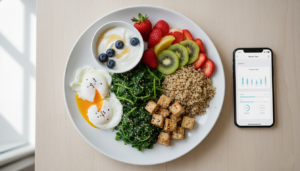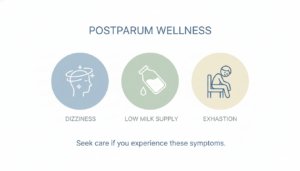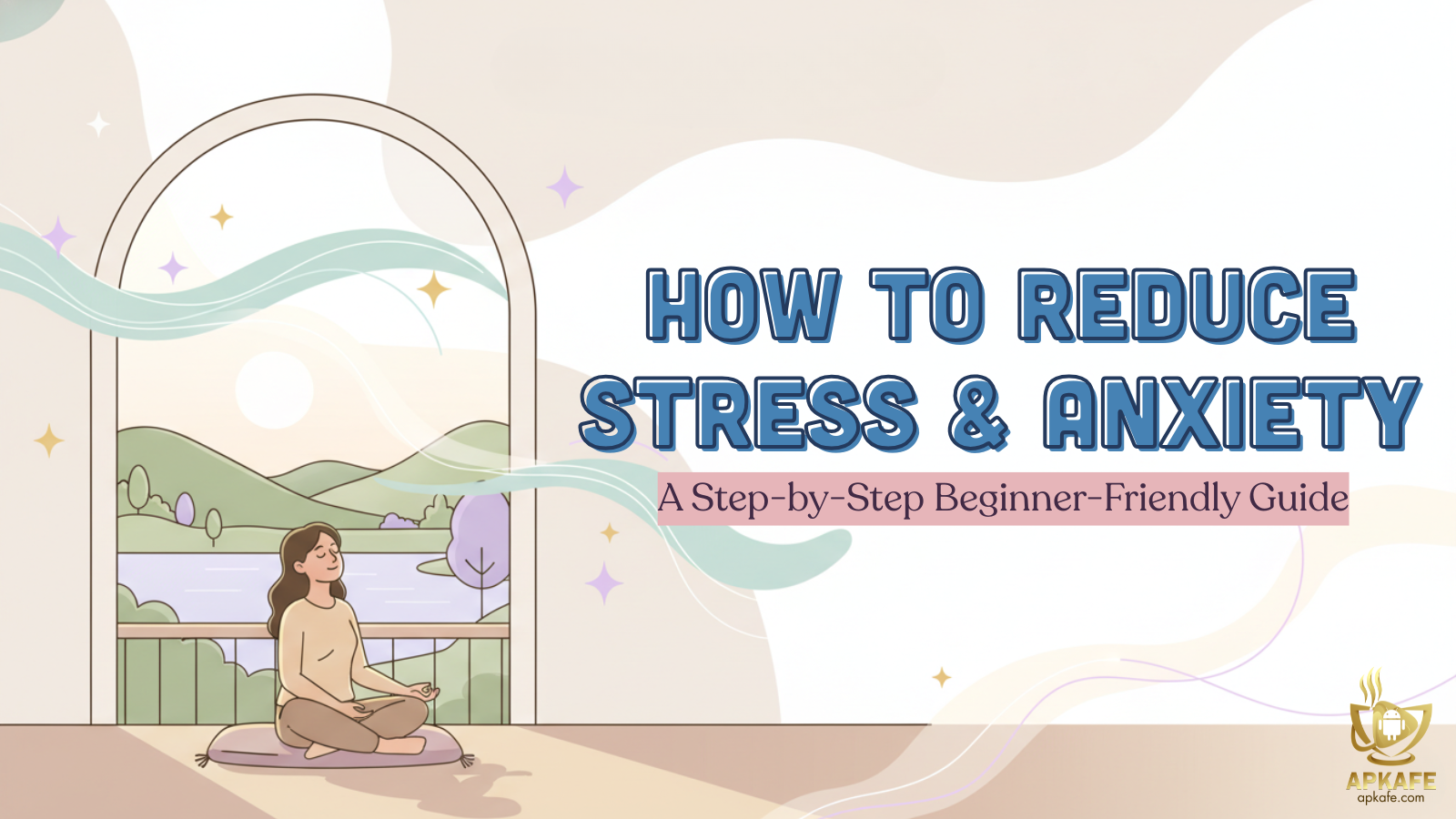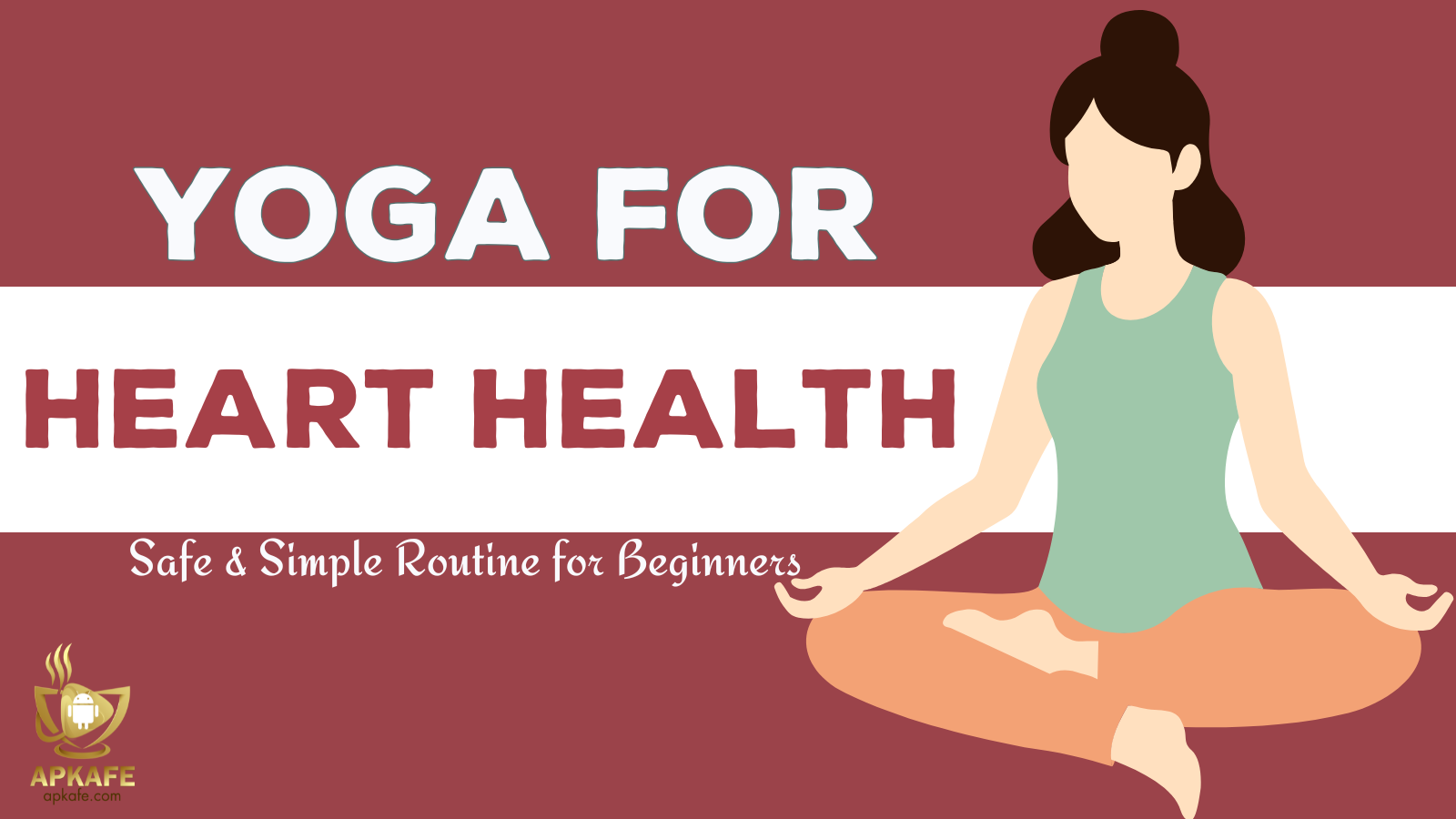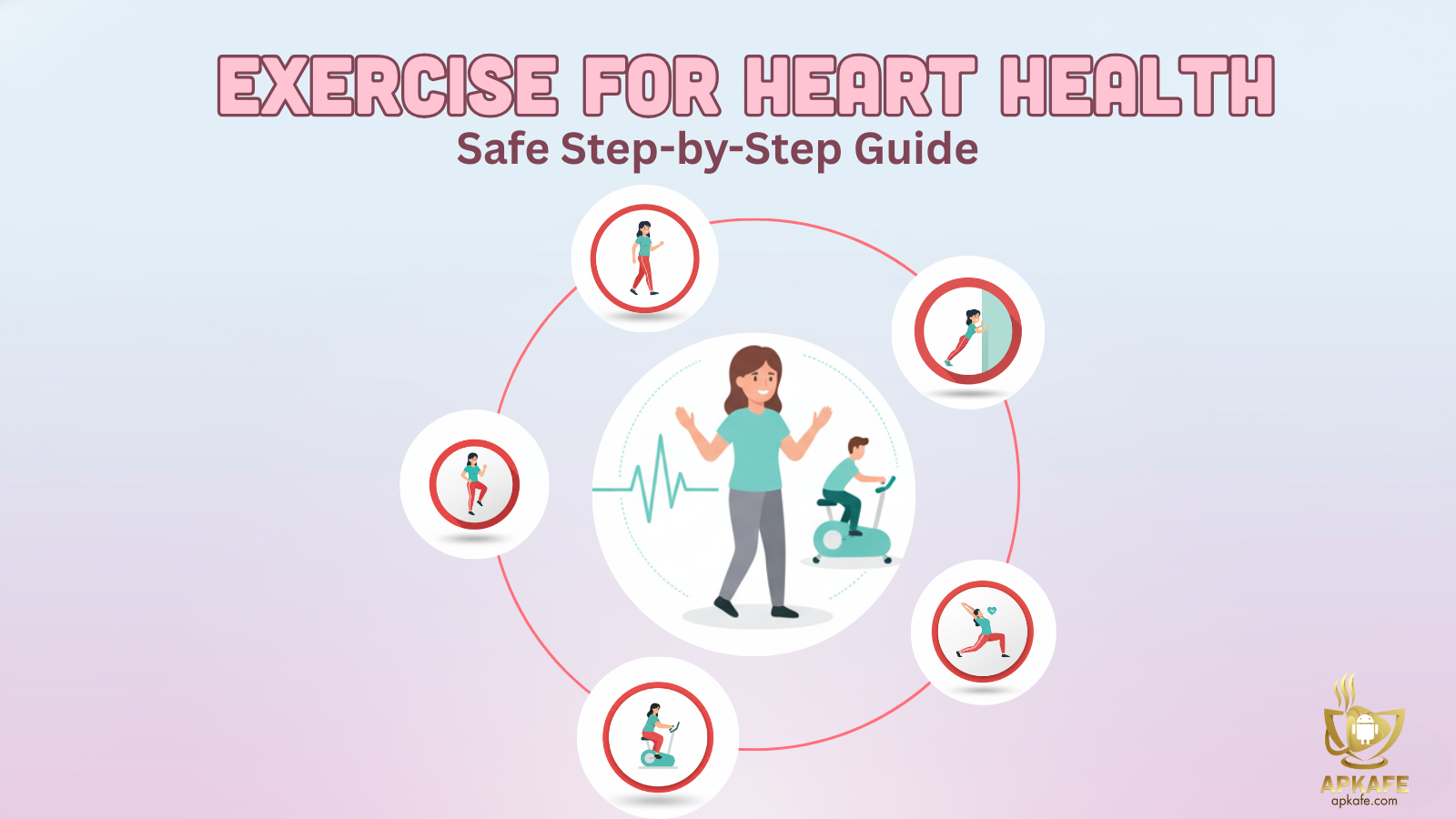How to Lose Weight While Breastfeeding Without Affecting Milk Supply
Breastfeeding changes your daily rhythm, your hunger cues, your sleep, your stress levels, and your energy. Many new parents want to feel more comfortable in their bodies again but worry that weight loss could lower their milk supply. This tension creates confusion: should you diet, eat more, rest more, or push yourself? And how do you avoid misinformation that could affect your recovery or your baby’s feeding? This guide gives you a clear, gentle, evidence-aligned plan for losing weight while breastfeeding without disrupting your milk production. You’ll learn how to set safe baselines, support your body’s nutritional needs, introduce movement, use apps wisely, spot early signs of supply changes, and avoid the most common mistakes. By the end, you’ll have a practical 7-step plan, safety cues, privacy guidance, and clear expectations for healthy postpartum progress.
When can you start trying to lose weight?

Most moms can safely begin gentle weight-loss efforts around six to eight weeks after birth. Your body needs this time to heal, recover, and adjust to producing milk.
If you have any health concerns or if your birth recovery is taking longer, it’s a good idea to check in with your healthcare provider before changing your diet or starting a new exercise routine. Every body heals at its own pace, and it’s completely okay to go slow.
What You Need Before You Lose Weight While Breastfeeding
Set the essential nutrition, energy, and hydration foundations first so your weight-loss efforts support not strain your milk supply.

Understand your postpartum energy needs
Breastfeeding increases energy needs by roughly 330–400 calories per day according to the CDC and NIH. This isn’t a “bonus” for unrestricted eating — it reflects how much fuel your body uses to produce milk. If you cut calories too aggressively or too quickly, your supply may drop, and you may feel dizzy, fatigued, or irritable.
A safe starting point is simply tracking what you eat without restricting yet. This establishes your baseline patterns and reveals whether you’re underfueling without realizing it — especially during cluster-feeding weeks.
Create a gentle, flexible baseline (sleep, hydration, meals)
Before thinking about fat loss, stabilize your daily rhythms. Prioritize hydration (aim to drink when thirsty; breastfeeding increases fluid needs) and regular meals with protein, whole grains, fruits or vegetables, and healthy fats. Consistent fueling helps maintain supply hormones and reduces cravings later.
If sleep is fragmented, use “micro-rests”: 15–20 minute lie-downs, slower afternoons, or co-napping when safe. Poor sleep increases appetite-regulating hormones and can tempt restrictive dieting — which is risky while nursing.
Ways to Lose Weight While Breastfeeding
Postpartum weight loss can feel overwhelming, you want to feel healthy again without risking your milk supply. The good news is that you can lose weight while breastfeeding, as long as the approach is gentle and aligned with your body’s needs.
Instead of restrictive diets or intense workouts, this guide focuses on simple, sustainable habits that support fat loss and milk production. With supportive apps like MyFitnessPal, Cronometer, BetterSleep, Calm, and Water Reminder – Daily Tracker, you can track your progress safely and stay consistent without stress.
Your goal isn’t rapid weight loss, it’s steady, healthy progress that keeps you energized, nourished, and comfortably producing milk.
Focus on Nourishing Meals First
Before creating any calorie deficit, you need to ensure your meals provide adequate nutrients for both you and your baby. Build each plate with high-quality protein (eggs, yogurt, tofu, lean meat), whole grains, healthy fats, vegetables, and fruits.
- Cronometer helps you see micronutrients like iron, calcium, folate — crucial for breastfeeding.
- MyFitnessPal is ideal for simple calorie and macro tracking so you can recognize patterns without strict restriction.
Pro tip: If you get hungry quickly, add a protein-rich snack between feeding sessions to reduce cravings later in the day.
Stay Hydrated All Day
Breastfeeding naturally increases your fluid needs. Dehydration can make you feel tired, increase cravings, and make let-down feel less comfortable.
Use Water Reminder – Daily Tracker to set gentle hydration alerts throughout the day, especially during feeding times.
Pro tip: Keep a water bottle next to your feeding chair and sip after each session.
Add Gentle, Consistent Movement
Your body is still recovering postpartum, so start with low-impact activities that feel good:
- Daily walks (stroller walks are great!)
- Light stretching
- Postpartum-safe yoga
These activities improve mood, increase daily calorie burn, and support weight loss without stressing your milk supply.
Pro tip: Track steps through MyFitnessPal or your wearable device to stay motivated.
Create a Small, Gradual Calorie Deficit (Only If Milk Supply Is Stable)
Once you feel steady with meals and movement, you can create a gentle calorie deficit — usually 10–15% of your total intake.
That might look like:
- slightly smaller portions
- swapping sugary snacks for fruit
- replacing high-calorie drinks with water or unsweetened tea
If you notice any of the following signs, increase your calories again:
- fewer wet diapers
- baby is fussier after feeding
- breasts feel less full
- you feel dizzy, weak, or overly hungry
Pro tip: Cronometer helps ensure you still meet your nutritional needs while adjusting calories.
Support Sleep & Reduce Stress
Poor sleep and stress can make weight loss much harder — and they’re extremely common for new moms. This is where soothing apps can help:
- BetterSleep provides relaxing sounds, guided sleep routines, and breathing exercises.
- Calm offers short meditations perfect for nap-time resets.
These tools help regulate stress hormones, which supports both healthy eating habits and milk production.
Pro tip: Even a 5-minute meditation can noticeably improve mood and reduce cravings.
Track Progress Gently (and Protect Your Data)
Tracking your progress helps you see trends, but it must stay stress-free and privacy-safe:
- Weigh yourself once a week, not daily
- Track mood, energy levels, and sleep quality
- Review app permissions and disable unnecessary data access (location, third-party sharing, etc.)
Apps should support you — not pressure you.
Watch Your Milk Supply Closely (Your #1 Priority!)
Monitor your supply with simple daily cues:
- Is your baby satisfied after feeding?
- Are wet diapers consistent with your usual pattern?
- Do your breasts feel full or produce milk normally?
- Do you feel energized, not depleted?
If anything seems off, stop calorie reduction immediately and return to baseline nutrition. Consult a lactation specialist if needed.
Health & Safety Reminder
This guide is for general educational purposes. It does not replace medical advice. Consult a healthcare provider before starting a weight-loss plan while breastfeeding, especially if you have medical conditions, symptoms, or concerns about your milk supply.
Pitfalls & Pro Tips
Avoid common habits that can disrupt supply or stall progress.
Common mistakes
- Cutting calories too fast.
- Starting high-intensity workouts prematurely.
- Ignoring hydration or sleep patterns.
- Using apps with aggressive calorie targets.
Expert-aligned pro tips
- Add protein at breakfast to improve energy.
- Pair movement with outdoor time to boost mood.
- Use “micro-meals” when appetite fluctuates.
- Keep a simple check-in list for supply signals.
Contraindications & “Stop If…”
Know when to pause or seek professional care. Stop weight-loss efforts and consult a lactation consultant or clinician if you experience:
- sudden decrease in milk supply;
- dizziness, faintness, rapid heartbeat;
- signs of dehydration;
- unusual fatigue or inability to concentrate;
- rapid weight loss without trying.
Postpartum conditions such as thyroid issues may also affect weight and supply.
Conclusion
Losing weight while breastfeeding is absolutely possible when you approach it with patience, nourishment, and consistency. Gentle habits like balanced meals, steady hydration, light movement, mindful tracking, and good sleep support both healthy fat loss and a stable milk supply. With the help of apps such as MyFitnessPal, Cronometer, BetterSleep, Calm, and Water Reminder, you can stay on track without stress or restriction.
Remember: progress doesn’t need to be fast to be meaningful. Listen to your body, protect your energy, and prioritize your baby’s feeding cues. If anything feels off, especially your milk supply or overall well-being pause, nourish more, and seek guidance from a healthcare or lactation professional.
Your journey should feel sustainable, supportive, and aligned with your postpartum recovery — not rushed.
FAQs
Will dieting while breastfeeding always reduce supply?
Not necessarily. Gentle deficits combined with nutrient-dense meals often preserve supply. Strict dieting is more likely to cause problems.
How fast is safe postpartum weight loss?
Many clinicians recommend gradual loss — around 0.5 lb per week — depending on individual factors.
Can I exercise intensely while breastfeeding?
Yes, once cleared, but increase intensity gradually and monitor supply.
Do breastfeeding moms need more water?
Your thirst usually increases naturally, but drinking to thirst is usually sufficient.
Are weight-loss apps safe while breastfeeding?
They can help, but you should review permissions, sharing, and deletion settings first.
User Reviews

